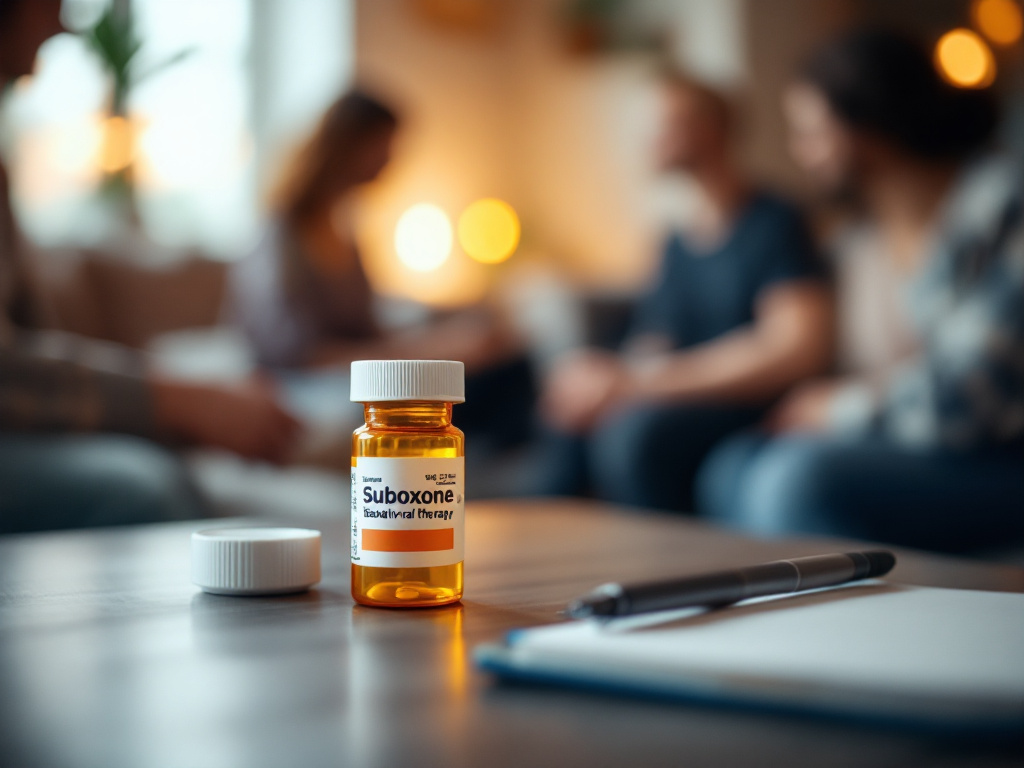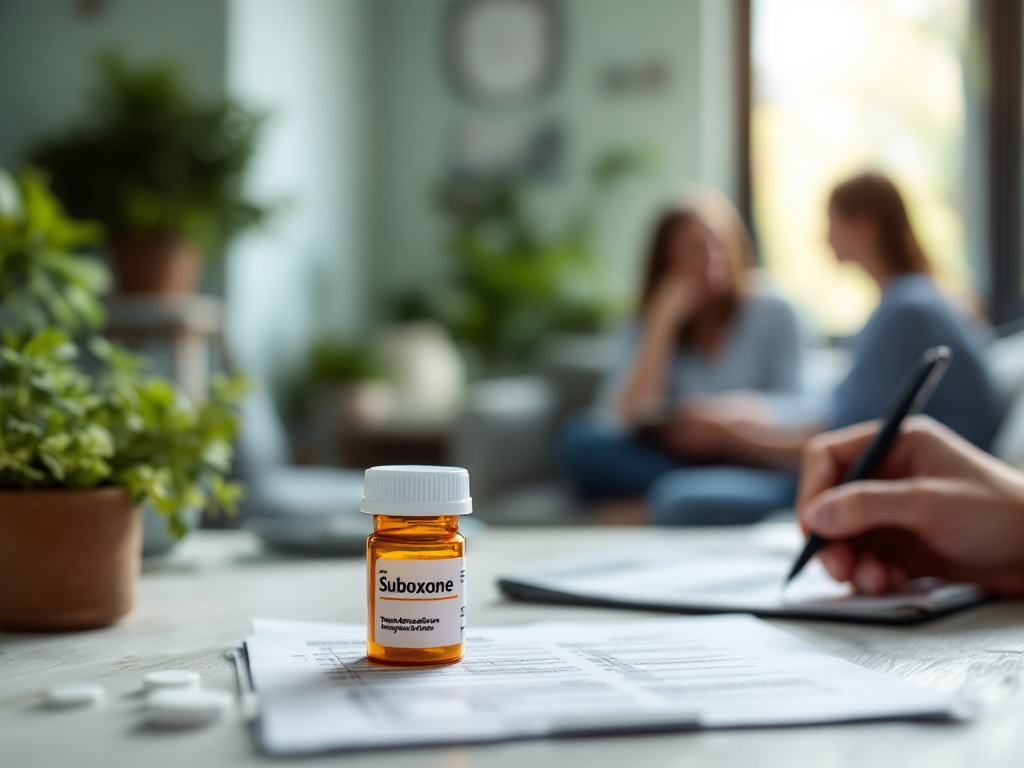Understand outpatient suboxone program
When you choose an outpatient suboxone prescription program, you take a significant step toward managing opioid use disorder in a supportive environment tailored to your needs. Outpatient medication-assisted treatment (MAT) combines evidence-based pharmacotherapy with counseling and peer support, offering comprehensive care outside of a residential setting. With buprenorphine-naloxone formulations like Suboxone, you benefit from reduced cravings and milder withdrawal symptoms, empowering you to focus on recovery while maintaining daily routines.
Medication-assisted recovery uses medications alongside behavioral therapies to address both the physical and psychological aspects of addiction. In an outpatient MAT model, you attend scheduled appointments for medication management and therapy sessions, creating an individualized plan that adapts as your progress continues. This approach respects your responsibilities at work, school, and home while providing the structure and support necessary for lasting recovery.
What outpatient care involves
Outpatient care centers around regular visits to a clinic or telehealth provider for medication monitoring, counseling, and peer support. Unlike inpatient rehab, you return to your home each day, which allows you to apply new coping strategies immediately within your environment. Partial hospitalization and intensive outpatient services can offer increased structure during the early stages of treatment, ensuring you receive tailored treatment programs that match your unique challenges.
Key elements of outpatient suboxone care:
- Initial medical evaluation and induction onto Suboxone
- Weekly or biweekly medication management appointments
- Individual and group counseling sessions
- Relapse prevention education and psychosocial support
- Coordination with primary care and mental health providers
How medication-assisted treatment works
Medication-assisted treatment combines pharmacology with therapy to create a comprehensive care plan. Suboxone contains buprenorphine, a partial opioid agonist that activates opioid receptors less intensely, and naloxone, an antagonist that deters misuse. Together, they reduce cravings, alleviate withdrawal, and discourage diversion, allowing you to focus on recovery goals.
In office-based models, clinicians licensed to prescribe buprenorphine oversee your care, offering flexible dosing schedules and personalized support. Studies show that Suboxone therapy can reduce emergency room visits by 23 percent and hospitalizations by 45 percent in the first year of treatment [1]. When combined with counseling and peer groups, MAT fosters resilience and promotes long-term abstinence.
For specialized buprenorphine programs, explore our buprenorphine addiction treatment services.
Benefits of office-based MAT
Office-based MAT provides convenience, continuity, and a supportive environment. You can:
- Maintain work, school, and family commitments
- Receive care from a familiar provider team
- Access same-day telehealth appointments when needed
- Build a network of peer support within your community
By integrating medication management with behavioral therapy, outpatient MAT empowers you to develop coping strategies and address underlying issues contributing to opioid use. This balanced approach respects your autonomy while offering structured support for sustainable healing.
Explore treatment phases
Outpatient Suboxone programs typically follow three distinct phases—induction, stabilization, and maintenance—each designed to guide you through a structured journey toward recovery.
Induction phase overview
During induction, you begin Suboxone treatment once you experience mild to moderate opioid withdrawal, usually 12 to 24 hours after your last opioid use [2]. This timing ensures that buprenorphine can effectively bind to opioid receptors without precipitating withdrawal. Your provider monitors your dosage closely over the first few days to find the level that alleviates cravings and withdrawal symptoms.
Key induction steps:
- Confirm opioid dependence and withdrawal onset
- Administer initial Suboxone dose under clinical supervision
- Adjust dose until withdrawal relief is achieved
- Educate you on safe medication storage and adherence
In an outpatient setting, induction can occur via telehealth or in-person at an outpatient mat clinic accepting insurance, providing flexibility and immediacy in starting your recovery.
Stabilization milestones
Once you reach a comfortable dosage, you enter the stabilization phase. Your goal is to maintain relief from cravings and withdrawal while minimizing side effects. This phase can last several weeks to months, depending on individual progress and treatment goals. Buprenorphine’s long half-life—ranging from 24 to 42 hours—allows for steady symptom control with once-daily dosing [3].
During stabilization:
- You attend regular medication management visits
- Therapy sessions address psychological and behavioral factors
- Providers monitor for any signs of misuse or diversion
Consider our suboxone stabilization treatment program for comprehensive support during this critical phase.
Maintenance goals
In maintenance, you consolidate the gains from induction and stabilization into a long-term recovery plan. The focus shifts to relapse prevention, coping skills, and gradual tapering if appropriate. Many individuals remain on maintenance dosing for at least 12 months to build a strong foundation for sobriety.
Maintenance strategies include:
- Periodic dose reviews and adjustments
- Ongoing individual therapy and group support
- Development of a suboxone taper and maintenance plan when you are ready
Our suboxone maintenance outpatient program ensures you have the structure needed for sustained recovery and minimal disruption to your daily life.
Integrate psychosocial support
Medication alone addresses the physical aspects of addiction, but long-term recovery also requires addressing psychological and social factors. A holistic approach combines Suboxone therapy with evidence-based counseling and peer support.
Cognitive behavioral therapy
Cognitive behavioral therapy (CBT) helps you identify and reframe negative thought patterns that can trigger substance use. By practicing coping strategies and stress management techniques, you build resilience against cravings and high-risk situations. CBT is a cornerstone of many suboxone and behavioral therapy programs, ensuring a comprehensive care plan tailored to your unique challenges.
Benefits of CBT:
- Encourages self-reflection and insight
- Teaches practical skills for managing triggers
- Reduces the likelihood of relapse
Peer support and groups
Recovery groups like Alcoholics Anonymous (AA) and Narcotics Anonymous (NA) provide empathetic understanding and accountability. Studies indicate that participating in such groups enhances sobriety rates and fosters a sense of community [4]. Whether you join a local meeting or engage in virtual peer networks, sharing experiences with others in recovery builds camaraderie and hope.
Address co-occurring disorders
Many individuals with opioid use disorder also struggle with depression, anxiety, or other mental health conditions. Integrated treatment plans coordinate psychiatric care, medication management, and psychotherapy to address these co-occurring disorders. By tackling both addiction and mental health simultaneously, you increase your chances of lasting recovery and improved quality of life.
Compare care levels
Understanding the continuum of outpatient services helps you choose the right intensity of care for your situation. Two common levels are partial hospitalization programs (PHP) and intensive outpatient programs (IOP).
Partial hospitalization programs
PHP offers a structured, full-day schedule without overnight stays. You attend therapy, medical monitoring, and skill-building groups for several hours each day, typically five days a week. This level of care suits individuals requiring close supervision and a supportive environment during early recovery.
Intensive outpatient services
IOP provides several hours of therapy and counseling per day, usually three to five days per week. It focuses on relapse prevention, psychoeducation, and coping skills, allowing you to continue working or studying while engaging in treatment. IOP is ideal for mild to moderate addiction or as a step-down after PHP.
Outpatient care comparison table
| Feature | PHP | IOP |
|---|---|---|
| Daily treatment hours | 6–8 hours | 3–5 hours |
| Weekly intensity | 5 days | 3–5 days |
| Focus | Medical monitoring and therapy mix | Group counseling and skill building |
| Ideal for | Early recovery with high support needs | Transitioning to independent recovery |
| Return to home | Yes | Yes |
Evaluating these options with your provider ensures that you receive the right level of care at each stage of recovery.
Check insurance coverage
Affordability and coverage are crucial considerations when selecting an outpatient Suboxone program. Fortunately, many health plans cover MAT services.
Coverage for medication
Suboxone treatment is recognized as an evidence-based therapy for opioid use disorder and is covered by most private insurers, Medicare, and Medicaid. Your plan may cover office visits, medication dispensed by a pharmacy, and lab testing. For verification, ask your provider to confirm benefits through our insurance verified suboxone treatment service or check directly with your insurer. Programs like suboxone therapy covered by medicaid ensure access regardless of financial status.
Out-of-pocket costs
Outpatient care typically incurs lower costs than inpatient rehab, since you do not pay for room and board. Copayments, deductibles, and coinsurance vary by plan. To minimize expenses, explore options like sliding-scale fees or federally qualified health centers that offer reduced rates.
Verify provider networks
Choosing an in-network provider can lower your out-of-pocket expenses. Look for a virtual suboxone medication clinic or local outpatient mat clinic accepting insurance that participates in your plan. If you live near Pittsburgh, you might benefit from an outpatient mat provider near pittsburgh to reduce travel costs and maintain continuity of care.
Plan taper and maintenance
As you progress, planning for tapering and long-term maintenance becomes essential. A thoughtful strategy reduces the risk of relapse and supports your autonomy.
Create taper schedule
When you and your provider agree it’s time to reduce your dose, develop a gradual taper plan to minimize withdrawal and cravings. Our suboxone taper and maintenance plan outlines stepwise dose reductions, monitoring checkpoints, and support resources.
Monitor progress
Regular check-ins track your symptoms, mental health, and social functioning. A suboxone recovery management plan includes:
- Self-assessment tools
- Urine drug screens
- Mental health evaluations
- Feedback from counselors
These measures ensure you stay on course and allow timely adjustments to your plan.
Prevent relapse
Relapse prevention involves identifying personal triggers, practicing stress-reduction techniques, and maintaining strong support networks. Engage in:
- Peer support meetings
- Mindfulness and relaxation exercises
- Structured daily routines
- Emergency planning for high-risk situations
By staying proactive, you build resilience and safeguard your recovery journey.
Access telehealth services
Telehealth has revolutionized outpatient MAT, offering immediate access to care when you need it most. Freedom Healthcare positions itself as your trusted partner with same-day telehealth scheduling and confidential, virtual support.
Schedule same-day appointment
When cravings or withdrawal symptoms strike, you can secure a same day buprenorphine appointment through our telehealth platform. This rapid response minimizes discomfort and helps you stay engaged in treatment.
Confidential provider access
Our network of board-certified addiction specialists offers personalized care without the stigma associated with clinic visits. A confidential outpatient suboxone doctor safeguards your privacy and tailors your plan to your unique circumstances.
Virtual clinic benefits
Telemedicine removes barriers such as transportation and scheduling conflicts. With our virtual suboxone medication clinic, you can:
- Receive medication management from home
- Attend therapy sessions via secure video
- Access 24/7 support lines
- Coordinate care with local resources
This flexibility ensures you remain connected to comprehensive care, no matter where you are.
Take next recovery steps
Your path to healing is within reach. By choosing an outpatient suboxone prescription program, you access a structured framework that addresses the physical, psychological, and social dimensions of opioid use disorder. Freedom Healthcare is committed to guiding you every step of the way, from initial induction to long-term maintenance.
Start your personalized plan
Begin with a comprehensive evaluation by an outpatient addiction medicine provider. Together, you will:
- Assess eligibility and medical history
- Review insurance benefits through buprenorphine treatment covered by insurance
- Establish a tailored induction and stabilization schedule
- Integrate behavioral therapy via suboxone and behavioral therapy program
Explore additional resources
Enhance your recovery toolkit with:
- buprenorphine therapy for opioid recovery
- buprenorphine treatment plan setup
- suboxone medication support therapy
These programs reinforce your progress, foster accountability, and provide ongoing guidance.
You do not have to face opioid addiction alone. With a supportive outpatient MAT program, expert clinicians, and flexible telehealth options, you gain the freedom to heal on your own terms. Reach out today to schedule your same-day appointment and take the next step toward lasting recovery.











